Currently, Russia is establishing and developing new methods of farming. The reforms taking place in the country concern all spheres of employment. The foreign economic activity of Russia did not go unnoticed. This sector is of particular importance for the effective development of domestic production. Let us analyze foreign economic activity. 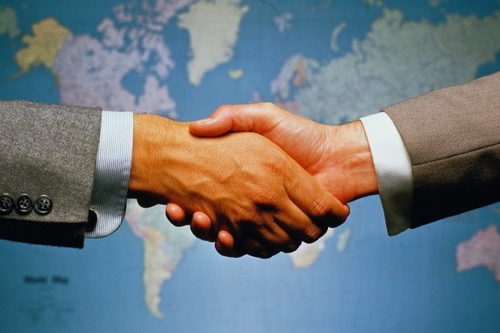
General information
State foreign economic activity is a complex of specific tasks of production structures. Today in this sector, as, indeed, in other major sectors of the economy, significant changes are taking place. Relatively recently, foreign economic activity was considered a monopoly state sphere. Today the situation is somewhat different. The country embarked on the path of liberalization of foreign trade, thereby opening up access to it for organizations, enterprises and other business entities.
Changes
The development of foreign economic activity today is characterized by the following transformations:
- The rights of branch departments and ministries, associations, companies, organizations to enter the international market are expanding.
- The number of participants in foreign trade is increasing.
- A stable regulatory framework is being formed.
Today, in this way, not only the state is involved in foreign economic activity, but also associations, corporations, communications and agricultural organizations, industrial and transport sectors, commercial and trade-intermediary structures. Evaluation of their activities allows us to identify potential opportunities for competition on one or another trading platform, to develop means and tools through which success and competitiveness can be ensured.
Foreign economic activity of the enterprise: concept and essence
This area of management is associated with international scientific, technical and industrial cooperation, import and export of goods, and companies entering international markets. In the country, in fact, until recently, foreign trade activities were carried out. In addition to sales on world markets, scientific, technical and technical and economic cooperation was carried out. The foundations of foreign economic activity began to emerge in the country by 1987. At that time, large-scale reforms were carried out in the economic sphere. Their essence was the decentralization of international trade and the transition from intergovernmental relations to the foreign economic activity of the country's production structures. 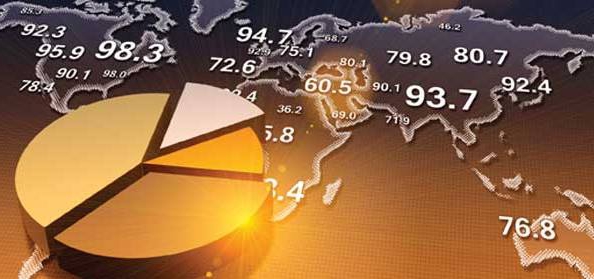
Targets and goals
The fundamentals of foreign economic activity are the principles by which political, trade, and economic relations between countries are built. These relationships are established at the government level. Foreign economic activity is carried out:
- to get acquainted with various aspects of international cooperation with foreign companies and organizations;
- consideration of methods for evaluating and researching promising areas of domestic companies' functioning for entering global markets;
- changes in import and export volumes;
- providing the country with energy, raw materials and other necessary resources;
- changes in the ratio of import and export prices.
These goals are realized through the study of:
- The theoretical basis of international trade and the division of labor.
- Methods and techniques of world market policy.
- Techniques and organizations of foreign economic operations.
- International pricing tools.
Regulation of foreign economic activity
To ensure effective control over the industry in question, it is necessary to form an administrative structure appropriate to the conditions. In this case, it is advisable to turn to the experience of specialized international organizations (WTO). These associations manage foreign economic activity according to a well-established scheme. The company acts as the leading structure in the WTO. Her work boils down to the sale of certain products or to trade relations with a group of countries. The company is managed by a director and several deputies (depending on turnover). 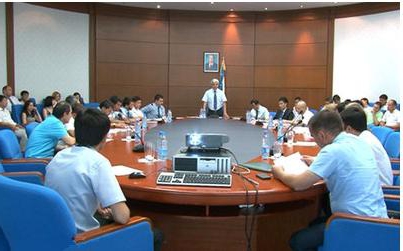
Planning
To accomplish this task, the following are created:
- Planning and Economic Department. He carries out planning of international trade, provides control over the implementation of the measures envisaged, performs an assessment of economic activity.
- Currency and financial unit. It carries out monetary planning, provides control over settlement, credit, banking operations, as well as the observance of the interests of the organization in international transactions.
- Transportation Department. This unit plans and provides for the transport of imported and export cargo.
- Bookkeeping. This department carries out accounting, maintains reporting, settlements with suppliers, banks, third-party entities, calculates and issues salaries, analyzes the results of financial activities, makes recommendations for its improvement.
Marketing
Foreign economic activity of the enterprise provides for various preliminary studies. For this, the corresponding departments are created:
- Prices and conditions. This unit examines supply and demand, the dynamics of formation of the value of products, the structure of existing markets. The tasks of the department also include coordination of work with foreign agents, systematization of materials, methodological guidance and supervision of the correctness of the calculations and the application of prices in the process of preparing and concluding contracts.
- Exhibitions and advertising. This department organizes the company’s participation in fairs and other demonstration events, ensures the dissemination of information about the company among potential customers.
- Engineering and technical. This unit is engaged in the study of requirements and standards for products in force on world markets, informing management about them. He also carries out an analysis of the quality and technical level of the product, its competitiveness, and prepares relevant conclusions and recommendations.
- Joint ventures. This department coordinates, monitors and plans the functioning of corporations formed with the participation of foreign investment in the country.
- Spare parts and maintenance. This department provides warranty and post-warranty service of products exported abroad.

Administrative staff
Foreign economic activity is accompanied by the adoption and implementation of a number of important decisions. To ensure these tasks, there are:
- The personnel department, which resolves the issues of the placement and selection of employees, carrying out the registration of personal files of specialists.
- Office for registration and movement control organizational and administrative documents and letters.
- Development department, improving the organizational structure of the enterprise.
- A legal service that provides assistance in drafting contracts and agreements, advises on complaints, presentations, disagreements, protects the interests of the company in courts, and so on.
- The department of business trips arranges official trips abroad.
- The administrative and economic structure ensures the supply of equipment and materials necessary for work, is responsible for the operation of the structure and performs other economic activities.
- The ACS department automates settlement operations, implements economic mathematical methods and computers in the work, creates databases and maintains them.
- The protocol service carries out the instructions of the management for meetings, seeing off, receiving foreign companies and their representatives who arrived on business visits.
In those companies where foreign economic activity has been relatively long and quite active, the international trade apparatus may exist as part of the internal production structure as a specialized department and as a relatively independent unit as a subordinate company. 
Subjects
Participants in foreign economic activity can be classified according to various criteria. So, for the separation, the nature of the operations performed, the legal structure that determines the order of creation, the method of profit distribution, capital ownership, and the profile of the company are important. Foreign economic activity can be carried out only by officially registered associations. For this, it is necessary to approve the constituent documentation (contract and charter), obtain a certificate of state registration. In addition, the company must be registered with the tax service at its location, receive a stamp and seal in the manner prescribed by law, enter the necessary information into the state registry.
Transaction specifics
Foreign economic activity involves the conclusion of various agreements and contracts. The feasibility of transactions involves compliance with a number of provisions:
- The basis of export-import operations is the principle of absolute self-sufficiency (including foreign exchange) and self-financing, that is, full cost accounting.
- The volume of the transaction is determined in accordance with the resources (intellectual, currency, material) available to the company.
- The conclusion of the contract must be preceded marketing research, feasibility studies. In addition, you need to calculate and consider many options for possible transactions.
- The signing of agreements / contracts is carried out in compliance with the requirements of international decrees, laws, resolutions of authorized organizations, bilateral agreements between countries and other regulatory acts.
For a newly formed trading structure, it is better to first gain some experience in working in the domestic market and only then enter the international trading floors. 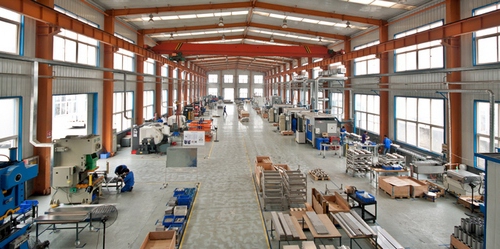
Business Classification
Today, there are various forms of foreign economic activity. The most common ones include:
- Consortia. They are a combination of foreign trade and production companies. They account for no more than 0.5% in the total number of subjects. Consortia are created to implement large projects (for example, the construction of real estate abroad). The participants in such associations are manufacturers and suppliers of exported goods, financial and design companies. The activities of the consortium may be one-time or long-term.
- International Trade Organizations (VO). They serve wind farms operating under the terms of intergovernmental agreements, inter alia, exporting under licenses of the Ministry of Foreign Economic Relations, as well as critical (special) imports according to a number of decisions of the country's authorities.
- Industry associations. They are formed for the development of foreign economic activity of companies in a particular sector.
- Mixed societies.Such associations are created abroad with the attraction of funds from large domestic exporters and foreign partners. The goal of mixed societies is to promote the expansion of Russian exports. These associations provide the receipt of relevant and complete information about sales markets, the level of competitiveness of goods.
- Trading houses. They include associations consisting of a variety of insurance, research, storage, banking, transportation, manufacturing, foreign trade organizations. They unite on a voluntary basis and conduct work both abroad and in domestic markets.
- Trading companies. At their core, they are close to trading houses, but are less universal. These associations search the market for products and goods for a specific site, provide loans, carry out transportation, and draw up documentation.
Operations Performed
Within the scope of this sphere, the following types of foreign economic activity can be distinguished:
- Purchase and sale of products. Such transactions involve the transfer of goods by the seller to the buyer in the property on time and on certain conditions. In this case, the acquirer is obliged to pay the agreed amount.
- Receiving-rendering of services. These operations are in most cases separate from previous transactions.
- Purchase and sale of scientific and technical products. These transactions are allocated as an independent group due to the fact that they may possess not only scientific, but also commercial value.
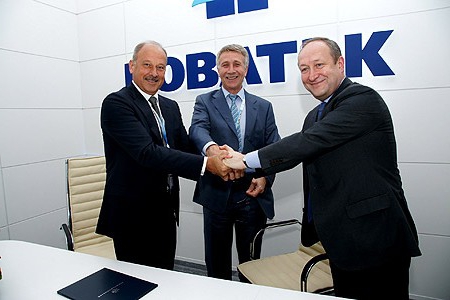
Purchase and sale of products
The following types of foreign economic activity are carried out within this sphere:
- Export - sale and delivery of goods abroad for transfer of ownership to a foreign counterparty.
- Import - purchase and import of foreign products for the purpose of further marketing in the domestic market.
- Re-export - re-export abroad of delivered goods that have not undergone any processing.
- Reimport - import from abroad of previously delivered domestic non-processed products.
As part of these transactions, customs regulation of foreign economic activity is carried out. It provides for monitoring the compliance of exported and imported goods with the requirements adopted by governmental and international regulations.
Provision of services
This foreign economic activity includes two groups of operations. The first includes rental, engineering, international tourism. These operations form the main group. The second category is providing services. A counter partnership may also be envisaged, which is recorded in agreements. In accordance with them, counter obligations for the mutual provision of services are formed.
Transactions with scientific and technical goods
In this group are carried out:
- Operations for the sale and purchase of patentable products. For example, it includes industrial designs, trademarks, inventions, and so on.
- Exchange of results of research work.
- Operations for the acquisition and sale of non-patentable objects.
The value of import and export contracts is determined on the basis of world prices. This, of course, distinguishes the pricing methodology in the framework of foreign economic activity from the methods used in the sale of goods on the domestic market.
Conclusion
In different historical periods, foreign economic activity had a significant influence on the solution of problems that arose in the economic sphere of any country. A separate place in matters of technology for conducting and creating international trade operations is the conclusion of a contract. In many cases, the success of a transaction depends on how it is composed. It should be noted that the exit to world markets requires certain efforts from companies, firms, enterprises.It must be remembered that foreign economic activity is associated with increased risk. Therefore, for a company planning to enter global markets, specialists are needed who can understand the specifics of this sector.








